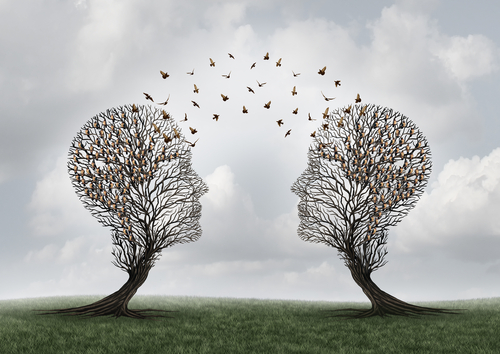
“Men Do Everything To Get Laid” — Tiger Woods and Sexual Selection
Male status aspirations and power displays are a result of their adaptive success in attracting women.
I recently watched the HBO documentary on Tiger Woods. I found it captivating. The return and redemption of Tiger Woods is a modern-day hero’s journey with unique ingredients: freakish, savant-like talent, a psychologically absent father, personal injury, drug addiction, estrangement from childhood, compartmentalization of feelings, a repressed inner world, public idolatry, public humiliation, and endless sexual temptation. (Concerning sexual dalliances, Woods was more in search of a “new self” than a new partner, but I will save that discussion for a post on infidelity from the view of author and psychotherapist, Esther Perel.)
Winning Takes Care of Everything – Fallen Hero Returns
As a hero, Tiger Woods fell hard. But he did return. Woods had five more victories in 2013, regained his number one ranking in the world, and spawned a controversial “Winning Takes Care of Everything,” Nike ad. Then, Woods suffered a back injury in 2014 and his game collapsed. But the “phoenix” rose again. Woods came back to win the Masters in 2019. He achieved some healing with his former wife, Elin, and demonstrated a rededication to his kids. In the language of the hero’s journey, that is a lot of positive “elixir.” Now in 2021, he faces the challenge of recovery from a fifth back surgery. The journey continues.
Tiger Woods – Infidelity and Sexual Selection
There are many psychological dimensions in the Tiger Woods life story. But let’s take a look again at his infidelities through the lens of evolutionary psychology (EP), mate selection, and what was being said in 2009.
Evolutionary psychologist Satoshi Kanazawa wrote a series for Psychology Today in 2008 entitled “Men do everything they do in order to get laid.” A follow-up piece in 2009 was about the infidelities of Tiger Woods. Kanazawa asked, “why are we surprised?” Kanazawa was bold and brash in his statements about human mate selection using Tiger Woods as an example.
Kanazawa asserted that all male behavior is consciously or unconsciously a response to female choice in mate selection. (This is not that controversial in the EP literature.) Men do everything they do with the ultimate goal of getting sexual access to women. The word “ultimate” is essential to Kanazawa’s meaning; I will explain below.
Men Compete and Achieve for Sex
Kanazawa said men compete and achieve to have sex with women and that this behavior is mostly unconscious. Men don’t necessarily know that they do everything they do in order to get laid. They consciously think that they want to attain the highest political office in the state or the country; they want to become a successful businessman and make more money than anyone else; they want to practice and play hard so that they can become the best in their sport; they want to make America laugh so that they become the most successful entertainer. Men want to do these things because they are designed by evolution to compete and achieve, and when they do, women seek them out as sexual partners.
Successful Men Have Affairs
Highly successful men have sexual affairs, not because they want to but because women choose them. (If what men want mattered, all men would have a maximum number of affairs, says Kanazawa). Sex and mating among humans and other mammals is an entirely female choice, not a male choice; it happens whenever and with whomever women want, not whenever and with whomever men want. What men want doesn’t matter because it’s a constant. What matters is what women want. (Evolutionary psychologists, like Kanazawa, are very cognizant of rape and sexual coercion as exceptions to this assertion.)
It’s Not Like They Don’t Want Their Man to Cheat
Here’s where Kanazawa showed his stripes of political incorrectness. He said, “Elin Nordegren* and other ‘wronged wives’ cannot really complain about their husbands’ affairs. It’s not like women want their husbands to cheat on them, but then, it’s not like they don’t want them to cheat on them either.” He goes on, “they have chosen to marry these men precisely because they are the type of men who would cheat on their wives. If they were the kind of men who wouldn’t (and, more importantly, couldn’t), then they would not have been attractive enough for the wives to marry.”
Bill Clinton became the President of the United States, unconsciously, indirectly, and ultimately, so that he could get laid. David Letterman became America’s favorite entertainer, unconsciously, indirectly, and ultimately, so that he could get laid. Tiger Woods became the most successful golfer in history, unconsciously, indirectly, and ultimately, so that he could get laid. It would be a tremendous evolutionary puzzle if these men, after spending their entire lives attaining the status and resources they attained, then didn’t have affairs. And their wives married them because they were the kind of men who could cheat on them.
Ultimate vs. Proximate Causes
Now, to understand that last point I need to remind you (from my page on EP) that evolutionary psychologists examine proximate and ultimate causes of behavior. Proximate causes of behavior often include stimuli in the immediate environment of the organism or physiological mechanisms inside the organism. Ultimate causes of behavior evoke our ancestral past and address behavior or psychological processes that were adaptive for survival-based natural selection or reproduction-based sexual selection. Ultimate causes of a behavior pertain to our evolutionary (phylogenetic) history, addressing these questions:
How did this behavior come to be? How was it adaptive? How did it confer reproductive benefits to individuals with this behavior?
EP seeks to understand both proximate and ultimate causes of species-typical psychological processes in light of basic evolutionary theory. Kanawaza’s argument is about the unconscious, ultimate causes of Tiger Woods’ idolatry from women, Elin’s choice to mate with him, and his pattern of infidelities.
Male Power is not an End in Itself
Male power is rarely (perhaps never) an end in itself. Male power is always a means to sexual access at the foundational level of evolutionary adaptation. Sex is always the ultimate end. “Trophy” wives or girlfriends are sought because of sexual attraction to them first and foremost, and they serve as status displays for sexual access to the next woman (“mate copying effect”). Male status aspiration and power displays are a result of their adaptive success in attracting women. This power can be abused. But here is the complexity: women also desire this power. It is needed for sexual attraction.
Hints of Dark Triad Attraction
As I have reported elsewhere on this site, men who have the dark triad traits of narcissism, Machiavellianism, and psychopathy have earlier sexual experiences and more sexual partners than men of average or typical character. (This is a successful short-term sexual strategy for the “dark triad” man and a failed long-term sexual strategy for his female partner.) Tiger Woods does not fit the dark triad profile exactly, but there are some elements of agreement. On the golf course, at least, Tiger had “dark triad” confidence and exceptional one-pointed focus. More “proximately,” Tiger is rich, talented in a unique way, and very famous. He has resources and status at the highest level. The temptation with interested women was ubiquitous and on-going even before he discovered Las Vegas with Michael Jorden and Charles Barkley.
Creative Talent, Intellectual Genius, and Athletic Prowess
Male competition for mates and female choice is the “first cause” of most male behavior and ultimately the first cause of all human affairs. Nearly all male behavior can be linked to female choice in mate selection. Competition between men for sexual access to women undergirds male striving for power, status, and expressions of creativity, genius, and athletic prowess.
Evolutionary psychologist Geoffrey Miller (The Mating Mind) argues that sexual selection may have played a more significant role than natural selection in shaping our species’ talents for storytelling, art, music, dance, humor, and leadership. The idea that music may have been shaped by sexual selection can be traced back to Darwin. There is plenty of sexual hysteria relating to rock stars, writers, artists — and athletes. Researchers Daniel Nettle and Helen Clegg found that professional male artists and poets had about twice as many sexual partners as other people. The effect was not true for female artists.
Male Crime and Risk-taking
Young men engage in more criminal activity and risk-taking than older men. (See note below on “young male syndrome.”**) Tiger Woods’ escapades in Las Vegas and affair with Mindy Lawton in a church parking lot were hallmarks of risk-taking. And his car crash was a young male cliché.
Male Creativity Peaks in Early Adulthood
Young men tend to produce more than older men and express more creative genius. This is a statistical correlation, not an absolute. The relationship to age and productivity (age-curve) among male jazz musicians, male painters, male writers, and male scientists is called the age-genius curve. Being a creative genius is part of what men do to get laid.
Benefits of Being a “Tiger”
There are no reproductive benefits from competition before puberty because prepubescent males cannot translate their competitive edge into reproductive success. With puberty, however, the benefits of competition rapidly increase. Once men are reproductively capable, every act of competition (be it through strength, skill, athletic prowess, violence, theft, or creative genius) can augment their reproductive success.
Marriage and First Child Depresses Productivity
Male creative productivity peaks in early adulthood and then declines, especially with marriage and the first child. Marriage depresses both crime and genius production. The age-crime curve and the age-genius curve can be explained as the mathematical difference between the benefits and costs of competition. Young men rapidly become more violent, more criminal, and more creative in late adolescence and early adulthood as the benefits of competition rise. Then, their productivity just as rapidly declines in late adulthood as the costs of competition rise and cancel its benefits. As an example, Orson Welles was a mere 26 years old when he wrote, produced, directed, and starred in perhaps one of the greatest movies ever made. He declined after that. (Welles married Rita Hayworth at age 28.)
Tiger Woods peaked as a teenager and was a golf “phenom” before he turned pro. But Tiger Woods is now predictably and naturally more focused on his kids.
Mate Selection for Exceptional Genes
We select mates based upon traits that effectively discriminate good genes from the norm. For many traits in our species, genes are fixed and lead to little variation among people. However, some traits have great variability between people – like Geoffrey Miller’s list of talents. Creative talent or athletic skill signal positive genetic variability. These traits help a man get chosen as a sexual partner.
Male Height is a Common Genetic Preference
There is a lot of variability in the height of adult males in North America — ranging from approximately 5 feet 3 inches to 6 feet six inches. Females who prefer relatively tall males (a widespread preference) demonstrate a preference for specific genes – the genes coding for tallness over shortness. Thus, sexual choice for an observable feature of a potential mate selects certain genes to be more likely than others to propagate in the future. (Tiger Woods is 6 feet, one inch.)
Golf Talent is Rare
Tiger Woods’ talent hitting a golf ball is a rare and exceptional genetic expression. Almost no one can hit and direct a golf ball like Tiger Woods. Tiger’s father (Earl Woods) was obsessed with golf and orchestrated Tiger’s direct exposure to golf as a toddler. Earl Woods legitimately thought Tiger innately predestined to be the best golfer in the world — a perfect integration of nature (genetics) and nurture.
Tiger’s Ultimate Goal
Tiger Woods’ ultimate goal is to be the best golfer that every lived — he wants to beat Jack Nicolas’ record of 18 major championships. No other trophies or total wins will do. Tiger is learning the toughest lesson of the hero. Yes, “winning (pretty much) takes care of everything” for attracting sexual partners and selling products. Tiger’s competitive drive is natural, instinctive, hard-wired. But does that heal the soul of a hero? We shall see.
Notes
*Make no mistake, Elin Nordegren was (is) a gorgeous, genetic “celebrity” (former model) with the very highest mate value. She could essentially have any man she wanted and could successfully choose a man of high status, stature (athletic prowess), and financial resources. That is what she did. By all accounts – fame did not need to be part of her partner’s profile. Erin was mistreated and was emotionally traumatized by Tiger Woods. (Kanazawa examined her unconscious choices.) With a divorce from Woods, she was made inordinately rich ($100 million). She had a baby in October 2019 with her boyfriend, former NFL football player, Jordan Cameron, who is 6 foot, 5 inches tall and worth approximately 20 million.
**Young men enter mate competition with fewer resources to offer women. When young men face the peril of being shut out of the mating game, violent risk-taking has been an evolutionarily sensible strategy. Today, risk-taking and antisocial behavior are strongly associated with being young and male across societies worldwide, and men at their reproductive peak tend to be the most inclined to violence, a phenomenon known as young-male syndrome.
Please Note: Your comment may take up to 12 seconds to register and the confirmation message will appear above the “Submit a Comment” text.




